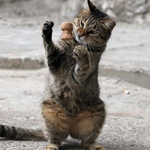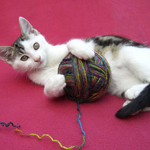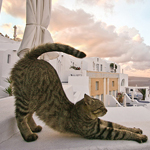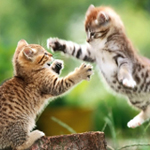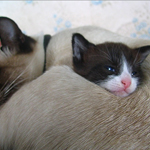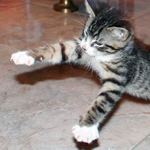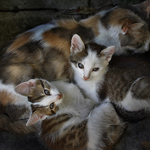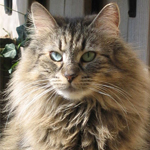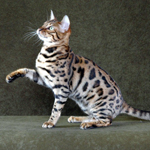
Independence, quick recovery and freedom of thought, that's the spirit of the domestic feline, of which there are an estimated 600 million worldwide. The cat's famed agility - almost always seeming to land its feet after falling from great heights - has earned it a reputation for having nine lives.
According to paleontologists, the cat appeared about 50 million years ago as a small and clever predatory carnivore with retractable claws. It has since filled the human heart with love, hate, devotion and fear, appearing in mythology and folklore as a symbol of good and bad luck. It has been revered as sacred, even as a god, and been despised as an agent of evil.
So precious was the cat in Ancient Egypt, that exporting the animal was forbidden, and killing one punishable by death. While warring with Egypt, the Persians are said to have captured thousands of cats, agreeing to spare them only upon Egyptian surrender. The Egyptians surrendered. However, around 400 BC, cat worship was banned, and subsequently lost its religious significance.
In Thailand, the 'Siamese' cat was the sacred temple cat. In China and Japan it was a beloved pet as well as a valued dispenser of mice for the cultivators of the silkworm. In India, cats guarded the temples of Buddha.
Because the domestication of the cat is still relatively recent, some cats may also still live effectively in the wild, often forming small feral colonies. Often monitored by animal protection services, the numbers have been kept under control, and inoculated against disease. In regions of Hawaii and Australia (where the cat is not native), the feral cat has become a unwelcome predator for many endangered species of wildlife.
See also: Black Cat, Leopard, Jaguar, Lion and Animal Tattoos Index


